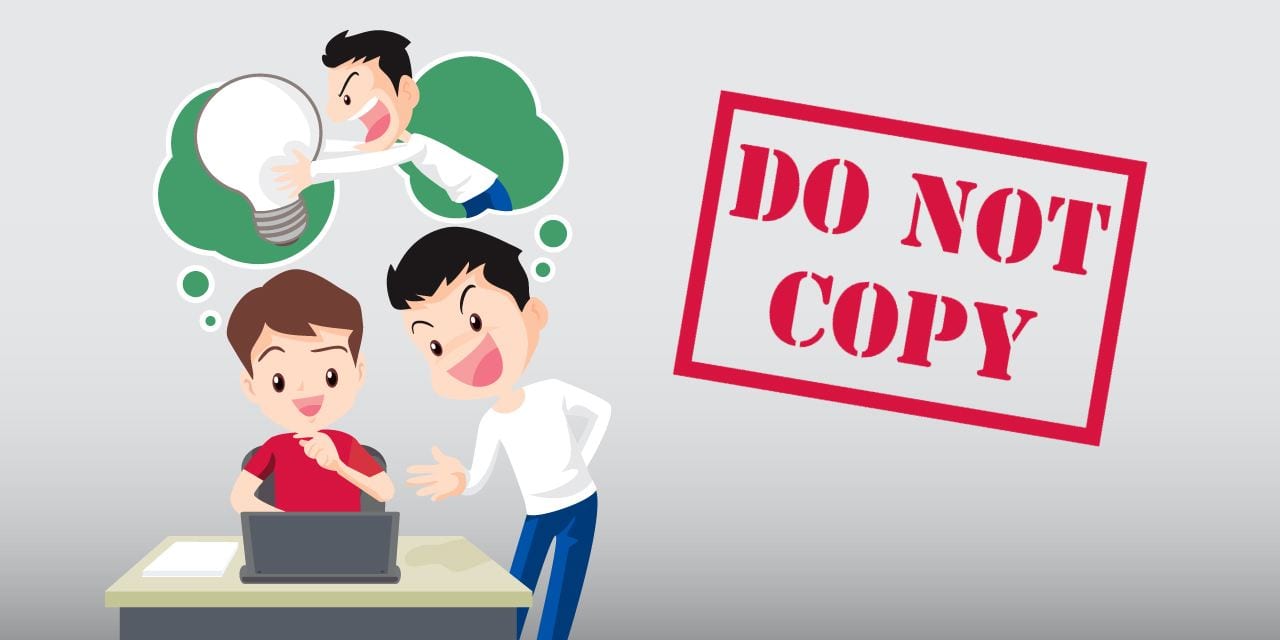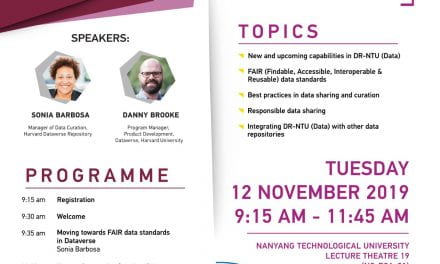Imagine you’ve just invented a smart window that reduces noise from the outside even when it’s left open. What now? Do you apply for a patent, trade mark, or copyright? What kind of intellectual property (IP) do you actually own? Do you even need to apply to protect your work?
As we enter the fourth industrial revolution, IP laws will become increasingly important. When more of us get what it truly means to be both a creator and a responsible user of IP, we can be more confident of shaping the future together.
Meanwhile, let’s look into some basics of IP and have some fun along the way!

Photo: Copyright, Patent, or Trademark? by BusinessSarah | CC BY 2.0
1. IP is more than copyright. Way more.
Many people have this notion that “IP = copyright”, or that they use the term “copyright” for everything related to creative rights. It is important to know that not every work can be protected under copyright.
Copyright only protects the expression of ideas in tangible forms. When you hum an original tune in the shower, be sure to get it musically notated or get the audio recorded before you start claiming copyright. This is because ideas by themselves (even musical ideas) cannot be copyrighted until they are expressed into a form that allows documentation. Even if your tune is off-key 😉 it can still be protected as copyright protects original works regardless of artistic merit and quality.
Copyright is typically applied to creative works in literature, theatre, music and art. But if your creativity is applied to products, brands or inventions, you will need to know other types of IP. Common ones listed in the Intellectual Property Office of Singapore (IPOS) website include registered designs, trade marks and patents.
Registered Designs Help to Protect External Appearances
Make your trade mark – forever.
Patents Protect Product and Process Inventions
2. There’s no need to apply for copyright. Sweet!
A work does not need a copyright notice © to be copyrighted. Unlike registered designs and other types of IP, copyright protection arises automatically upon the creation of the work in material form and does not require any registration.
Food bloggers like NTU graduate “Ms Tam Chiak” produce reviews, photos and videos like the one below and own the copyrights, typically without the need to register for each and every item made. If they find their rights infringed, they can stake their claims via various means of dispute resolution.
3. TL;DR. But not everything on the Internet is free to use.
Many of us do not bother to read the long Terms & Conditions page whenever we use a resource on the Internet. But we need to know that just because a work is publicly accessible does not guarantee that it is in the public domain.
A work is in the public domain only when copyright expires or when the copyright owners relinquishes their exclusive rights. This is why services like Google provide features to help you filter search results by usage rights.
4. Giving credit is not enough—unless they told you so.
Giving credit such as citations is important to show that we have academic integrity. However, giving credit does not automatically mean that we have adhered to copyright.
Very often, we reproduce text, images or videos from various sources in our course assignments. We don’t ask for permission in such cases because these are generally understood as “fair dealing” exceptions in copyright law. Moreover, we do not publish (or make public) our course assignments.
Even so, be aware that such exceptions are limited. For example, for the purpose of research and study, you can photocopy no more than 10% or one chapter of a book.
If you ever plan to publish or to commercialise your work, you should obtain the necessary permissions and licenses, or consider creating your own images or videos. Otherwise, you may get embroiled in a dispute like what a school in Germany got into.
Crediting the original creator is adequate only when they clearly told you so by licensing their content explicitly. Many creators use Creative Commons licenses which makes it easy for them to grant specific permissions on how others can use their work. Depending on the license, you may be allowed to share, reuse and remix the copyright materials legally as long as you credit the creators.
If you don’t find any license specifically mentioned, look out for the any terms of use by the creator, the website, or the source that you obtained the work.
When in doubt, request for permission or find alternatives.
5. Copyright cannot protect us from criticism.
How would we feel when our work get criticised or made fun of? 🙁 Even though we may feel bad, we need to embrace the fact that certain exceptions are necessary in copyright laws.
Under general fair dealing (or fair use), several factors are considered to determine if the use of someone else’ copyright is fair or not.
Generally speaking, criticism, satire, and parodies are shielded from trade mark and copyright liability because there is no intention on the critic’s part to reproduce the work in its originality.
That said, companies and brands should, and do have the liberty to contest and claim their rights via negotiation, mediation, arbitration or litigation. IP owners typically weigh many business considerations before deciding what to do.
###
Now that you have a better idea of IP, do you know about your IP rights as a student of NTU? For a start, many organisations now have policies on intellectual property which you can refer to, including NTU.
Do you have questions about IP in NTU or in Singapore? Let us know in the comments and we will try to address them in a future post.
This post is co-authored by student assistant Pang Wen Shuan and librarian Law Loo Shien.






